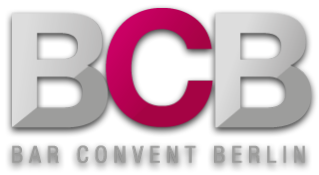The Secret Crux of Trends in Beverages
© Shutterstock
Bar ohne Namen
Entschlossen verweigert sich Savage, der Bar einen Namen zu geben. Stattdessen sind drei klassische Design-Symbole das Logo der Trinkstätte in Dalston: ein gelbes Quadrat, ein rotes Viereck, ein blauer Kreis. Am meisten wurmt den sympathischen Franzosen dabei, dass es kein Gelbes-Dreieck-Emoji gibt. Das erschwert auf komische Weise die Kommunikation. Der Instagram Account lautet: a_bar_with_shapes-for_a_name und anderenorts tauchen die Begriffe ‘Savage Bar’ oder eben ‚Bauhaus Bar‘ auf.
Für den BCB bringt Savage nun sein Barkonzept mit und mixt für uns mit Unterstützung von Russian Standard Vodka an der perfekten Bar dazu.
Now and again I come across the rant of a disgruntled bartender complaining about a certain trend that they find exasperating: alcohol free spirits, the come back of a particularly artificial liqueur that had its prime in the 1990s or a disco cocktail that should have stayed stuck in the past and never been revived, you get the gist of it. Every time, I wonder what makes a trend stick, and in turn, what makes it go away. How does a product, an aesthetic or concept spread in a community?
What is a trend?
The first thing you have to look at is what actually defines a trend – and the internet is unanimous: a general direction in which something is developing or changing. But it is the way it is defined by Martin Raymond in The Trend Forecaster’s Handbook that struck me as particularly relevant to our industry.
“A trend can be defined as the direction in which something tends to move and which has a consequential impact on the culture, society or business sector through which it moves. (…) Trends are compulsive, addictive and, in some cases, viral – infecting us when we least expect it, and on occasion whether we want it or not”
The bartender at the heart of everything
And here is what I asked myself? How instrumental are we in spreading a trend? Let’s take the example of a product. Product A has just been released on the market by one of the biggest spirit distributors of our industry. One of their sales representatives will soon come to your bar and gift you a free bottle. They will boast the quality of said product, highlight its sustainable approach, the competitive pouring costs and its innovative qualities. How lucky of you!
Soon after they left, you will start sampling it, making drinks with it and try it on some of your guests. And this is not a coincidence. Before you know it, you will be quite literally a “trendsetter”, undeniably instrumental to the journey of a product from novelty to the mainstream. You are also the pivot between the industry and the consumer, you are an influencer.
This is the diamond shaped trend model – developed by Henrik Vejlgaard, it gives you a representation of how a trend is diffused and travels from the moment of its creation until its death. The notion of travel or movement is intrinsic to the definition and understanding of a trend. And it is also what strikes me as particularly relevant to the role of the modern bartender.
In the context of the bar industry, the bartender is there to filter innovations from their creator to the mainstream. As you can see your endorsement as a trendsetter is essential to the navigation of a product from its creator to the mainstream world.
Everything can be a trend
Trends aren’t confined to commercial products only. Conceptual approaches can also become trends. Let’s take the example of mindful drinking. Thanks to the innovative thinking of influential actors of our industry, the trend of healthier habit has trickled down into our industry and spread to the mainstream consumers so much that more and more low- and no-ABV products are present on our market, taking a legitimate spot in our backbars and allowing bartenders to employ their creativity and create healthier concoctions.
Sustainability also started as a trend and has now been normalised. The examples are numerous and this pattern is a perpetual one. The point here is that the travel of trend is a natural and necessary process for innovation to trickle down and raise the quality benchmark for everyone – from creator to consumer.
What does it mean for bartenders
If bartenders are such an essential nerve centre positioned between innovators and the mainstream consumer, it is also all the more crucial that we get to know our worth. When off-trade sales generally represent the highest sales volume, it’s the on-trade business that brings the initial exposure to the trend object.
What does that practically mean for the bartender? Knowing where you stand and how determining your role is in our industry is a necessary step to learn what your financial value is. In a climate where we are being told the importance of diversification and to new skill acquisition, how do you know your worth? How much should you charge for your services? Where is the fine line between giving an industry friend a shout-out on social media and actually charging for what could be an advertising gig?
Know your value!
There are two main factors which are usually at your disposal to calculate your day rate: experience and skills. Those two aspects are usually measured by your credentials, status within the business that employs you, personal achievements.
However, one factor has become particularly relevant with the rise of social media: endorsement. Your endorsement of a trend, whether it’s a product or a more abstract concept is the most valuable asset you can present to a company willing to employ your service. It all boils down to your positioning yourself as the pivot that you are between said company and the mainstream audience.
